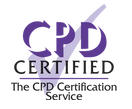
Learn the basics of
Grow Coaching Model
The GROW coaching model is a tried and tested coaching model to structure coaching conversations. Simple, but not simplistic, the GROW model will be presented in this course as a framework for your coaching conversations. The power of the GROW coaching model is that it leads to a clearly defined end result through four phases. The coachee is personally active in identifying problems and generating ideas for solutions. This means that anything that comes out of the coaching session has a lot of chance to stick.
Key Learning Objectives:
1. Understand the model to raise awareness and responsibility
2. Use the GROW model as a conversational process.

New Course
All levels
Certified

Course details
MODULE 1
Grow Coaching Model
MODULE 1
Grow Coaching Model
1.Introduction to the GROW model
We aim to define the GROW model and we briefly look at its history. GROW forms the backbone of coaching in many professions and organisations globally, due to the outstanding results. It helps people to achieve success personally or as part of a team.
2.Awareness and responsibility
This lesson frames your mind about how to use the GROW model. The aim of the model is to raise awareness and responsibility in order to achieve potential and goals. It is not to solve other's problems or to give advice, but to allow the coachee to own their actions and outcomes.
3.Goal setting
As we go through the first step of the the GROW model, we will look at goal setting. Most people are familiar with the SMART goal setting method, but here we look at how to apply it to both short term and long term goals.
4.Reality stage
Next we look at the Reality stage, where the focus is on techniques to allow space, empathy and active listening to do its magic!
5.Reality in practice
Here we unpack some techniques to use within the Reality stage that will greatly increse your effectivity in coaching.
6.Reality in practice 2
We complete the list of techniques to use within the Reality stage learn to pick up the deeper meaning of what is being said, having patience for the verbal and non verbal expressions to emerge and know when to move forward to the next stage.
7.Options stage
Now we have a look at the third step in the model, the Options stage. Here we look at how to allow options to be generated without advising and then how to allow options to be evaluated without forcing.
8.Way forward
With the fourth and final step in the model, the Will or Way forward stage, we assess the coachee's intention to act as well the readiness to move to action steps in order to know how to facilitate choice and to keep them accountable.
